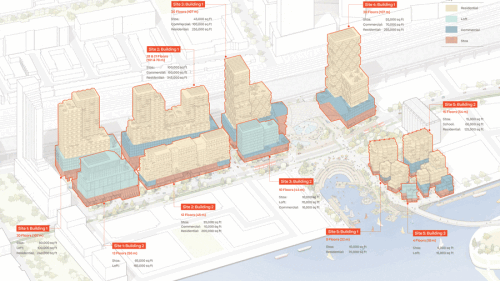Development and Construction
In 2017, the New York–based Northwood Investors spent $1.2 billion to purchase Ballantyne Corporate Park, a highly successful office property in Charlotte—the single-largest real estate transaction in North Carolina’s history at the time.
The 125-year-old parks system in Kansas City, Missouri, is a source of much civic pride. But the system also played a role in creating divisions in the community. A century later, these effects still reverberate in the parks system as development trends, zoning policies, and financial challenges have perpetuated inequity, according to panelists speaking at a ULI Advisory Services presentation in Kansas City, Missouri.
Positive news for Greater Philadelphia going into 2020 includes job growth, a growing population of young people, strong demand for apartments, and a booming, new biotechnology business, said panelists at a ULI Philadelphia event.
In 2018, Los Angeles-based real estate firm LOWE, sold its hotel operating subsidiary to Hyatt Hotels for $480 million. That kind of exit was not part of some original projection, said Robert “Bob” S. Lowe Sr., the company’s founder and a ULI Foundation Governor, speaking at a ULI event in South Carolinain mid-November.
Panelists at a recent ULI Charlotte event acknowledged that the city has much to be thankful for as it heads into 2020, but they also noted the need to protect the region’s quality of life and relative affordability, which have been key to attracting economic development and outside investment.
The Dodge Momentum Index, a monthly measure of the initial report for U.S. nonresidential building projects in planning, rose 6.9 percent month over month in October. The increase was due to a recovery in institutional planning projects, which had stepped back over the previous few months. Institutional planning moved 22.8 percent higher in the month while commercial planning lost 0.5 percent.
In the Waterfront Toronto RFP for Quayside, Alphabet’s Sidewalk Labs saw a key opportunity for a demonstration project unbound by the conventions of traditional urban planning or real estate economics. This was something new: a chance to innovate at the urban scale, to develop, deploy, and measure the success of a web of new technologies in an actual neighborhood.
By the end of 2019, the first families will move into new, million-dollar townhouses at Edge-on-Hudson, a $1 billion development that will eventually bring more than a thousand new residences to Sleepy Hollow, New York.
Hudson Yards, Schuylkill Yards, and Port Covington are just three examples of real estate development driven by expanding and diversifying economies in the country’s Northeast and Mid-Atlantic regions. Economic sectors such as technology, education and medicine, financial services, and media are thriving and gobbling up space in major markets.
New, tech-based companies create temporary apartment hotels, monetize absorption vacancies, and stimulate urban mixed-use projects.









